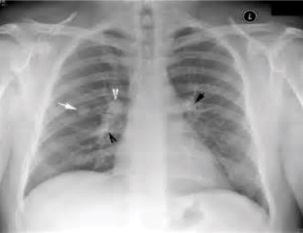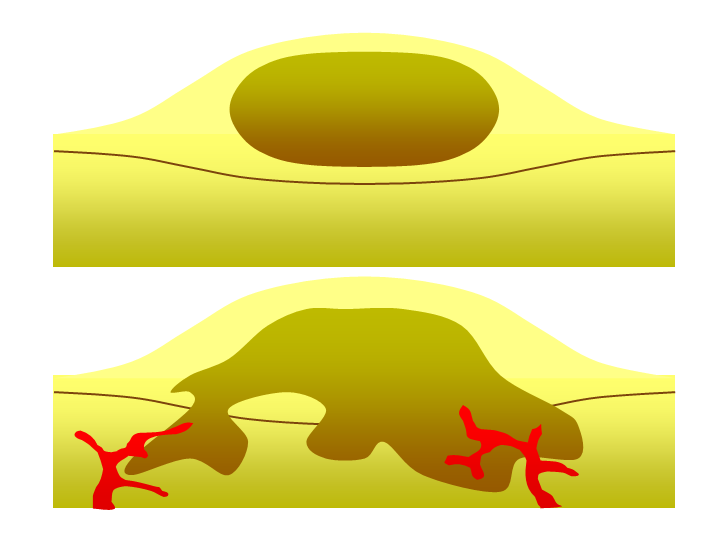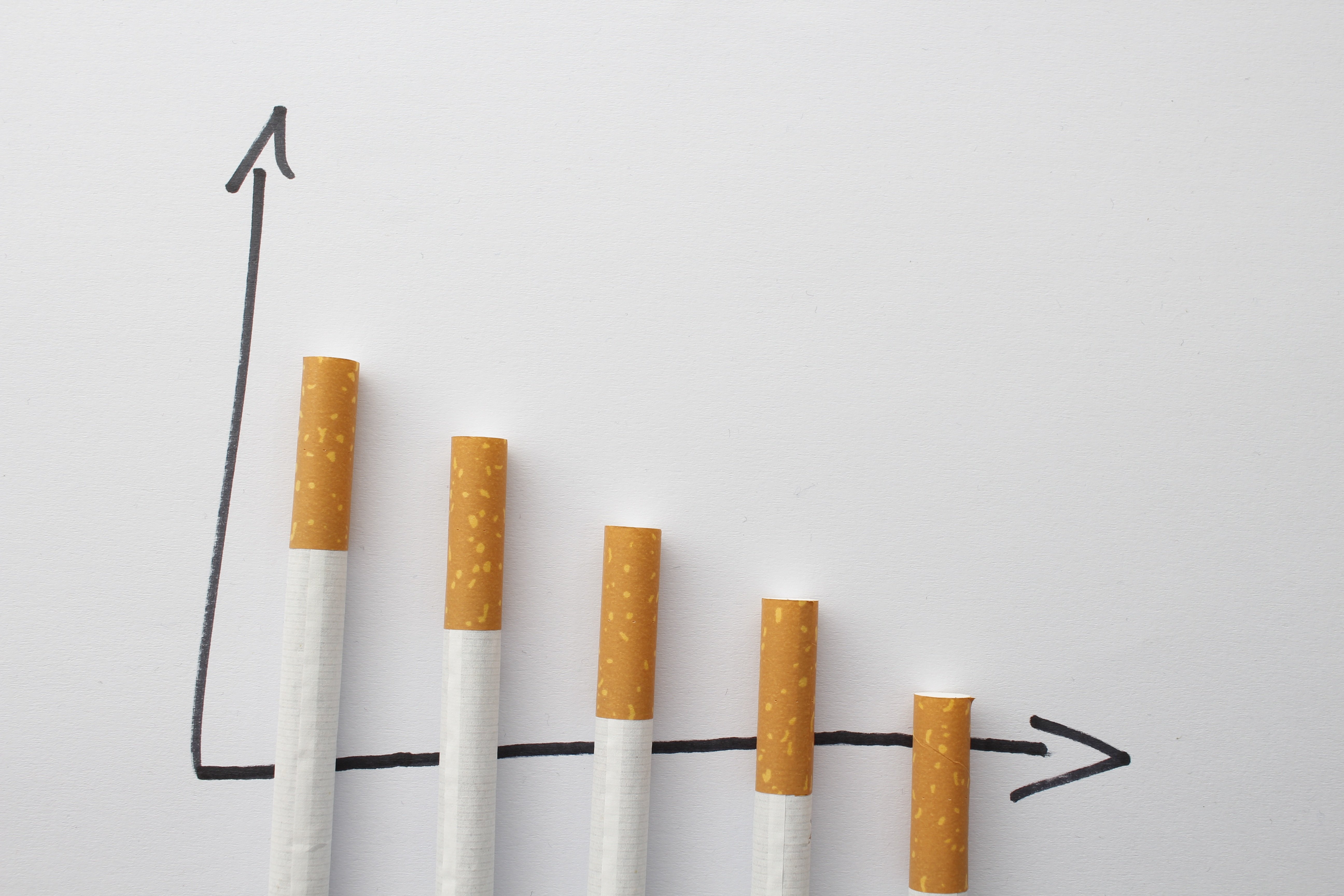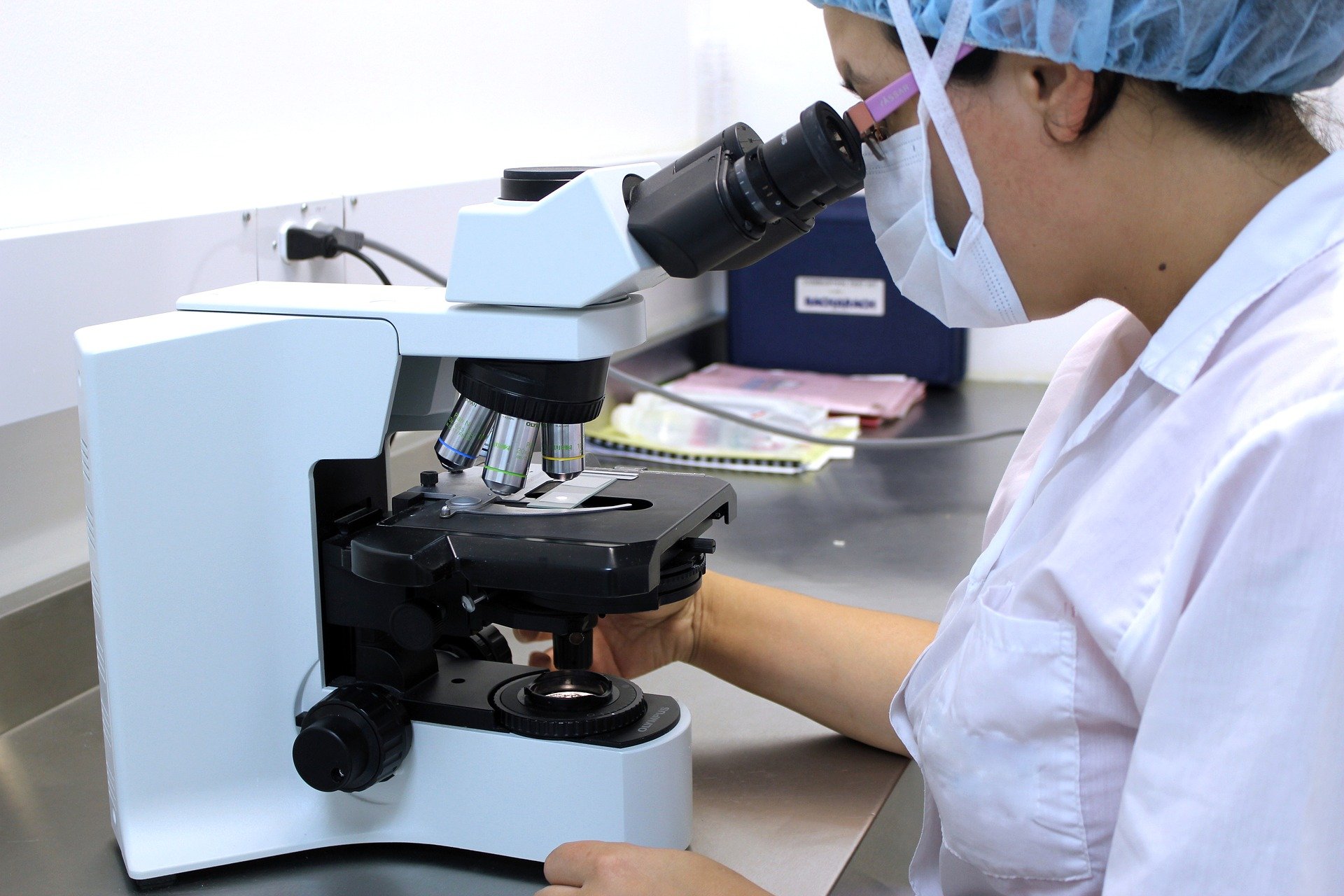Pulmonary nodules—or spots on the lung—are the source of a great deal of worry and stress for the thousands of people who are diagnosed with them every year. Despite the fact that pulmonary nodules are relatively common, the majority of people don't really understand what they are or how they work.
Many people's first thought is that pulmonary nodules are cancer—but this is not always true. In reality, most pulmonary nodules are harmless, and only a very small percentage of them turn out to be cancerous.
If you or someone you love has been diagnosed with lung spots, then you might be worried and you might have a lot of questions. In this guide, we hope to answer these questions and give you all the information you need to better understand pulmonary nodules and the level of risk they pose.
In the following sections we'll explain what pulmonary nodules are, what causes them, and what they mean for your health. We'll also take a closer look at the connection between pulmonary nodules and cancer, as well as how pulmonary nodules are related to other lung conditions like COPD.
{{cta('43b79c5e-6bd6-4f02-ac27-2d038d20c146','justifycenter')}}
What Are Pulmonary Nodules?

A pulmonary nodule is simply a small, circular-shaped patch of irregular tissue on the lungs. These patches usually show up after something, like an infection, irritates or damages part of your lung.
Pulmonary nodules are relatively common and often harmless, but they can be cancerous in some cases. You can have just one pulmonary nodule, or you could have several or many nodules on your lungs
Most pulmonary nodules are healed-over wounds—scar tissue, essentially—left behind after a period of inflammation. This inflammation can be caused by a variety of things, including lung infections and certain inflammatory diseases like sarcoidosis and rheumatoid arthritis.
On the other hand, some pulmonary nodules are not created by patches of inflamed tissue, but rather cancerous cells. These cancerous pulmonary nodules are essentially tumors, made up of mutated cells that quickly grow and spread.
Pulmonary nodules are often referred to as “coin lesions,” “spots,” or “shadows” on the lungs, since that's how they appear on scans. On a chest x-ray, for instance, a pulmonary nodule shows up as a small, light-colored or grey-ish spot on the lungs.
Most pulmonary nodules are very small, usually between about ½ inch to a little more than 1 inch wide. They usually don't cause any symptoms, but symptoms are more likely to show up if the nodule grows into a larger lesion (greater than 3cm), known as a mass.
In rare cases, pulmonary nodules can cause respiratory ailments similar to a cold or mild flu. In severe cases, they can cause wheezing, shortness of breath, coughing (or coughing up blood), and respiratory infections.
Are Pulmonary Nodules Serious?

Generally, pulmonary nodules are nothing to worry about. Research shows that they are surprisingly common, asymptomatic, and only carry a “minimal risk” for cancer.
In fact, it is not unusual for someone to have pulmonary nodules for years without even knowing. Since they don't cause any symptoms, most people don't figure out they have spots on their lungs until they show up on an unrelated chest scan.
If you are diagnosed with a pulmonary nodule, don't panic; chances are good that—like most pulmonary nodules—the spot on your lungs is benign. Even cancerous pulmonary nodules tend to be very treatable, since they usually represent an early stage of cancer.
Types of Pulmonary Nodules

There are several different varieties of pulmonary nodules you can get. They are generally differentiated by their cause and whether they are cancerous or benign.
Pulmonary Nodules Caused by Inflammation

A common cause of benign pulmonary nodules is infections and inflammation in the lungs. These can be caused by a variety of things, including:
- Bacterial, fungal, or parasitic infections in the lungs
- Inflammatory diseases like rheumatoid arthritis
- Repeated exposure to lung irritants like smoke
This kind of pulmonary nodule forms as a side-effect of your body's inflammatory response. This response gets triggered whenever your body detects irritation or infection in your lungs, and it helps your immune system fight off the invader.
As part of the inflammatory response, a granuloma, or a small patch of inflamed tissue, can form at the site of irritation or infection. Granulomas are your immune system's way of isolating the infection and preventing it from spreading to surrounding areas.
However, over time calcium deposits can form in the granuloma, leaving behind a permanent spot of calcified tissue. That spot is now a pulmonary nodule that can show up on chest scans long after the original source of irritation is gone.
This type of of pulmonary nodule is usually harmless, asymptomatic, and doesn't grow or change. It is like a scar; just a patch of tissue that's healed over but looks slightly different than it did before.
However, it's difficult to know if inflammation is the cause of a pulmonary nodule without doing further testing. If your doctor has any doubt that it could be cancerous, he will need to monitor the spot to make sure it doesn't grow.
Here is a list of some infections that can cause pulmonary nodules:
- Tuberculosis
- Mycobacterial infections
- Histoplasmosis
- Blastomycosis
- Aspergillosis
- Coccidiobycosis
- Roundworms (ascariasis)
- Hydatid cysts (echinococcus)
- Liver flukes (paragonimous)
Here is a list of some of the common inflammatory conditions that lead to pulmonary nodules:
- Rheumatoid arthritis
- Sarcoidosis
- Granulomatosis with polyangiitis
- Pneumoconioses
Pulmonary Nodules Caused by Cancer

Cancerous pulmonary nodules usually represent a very early form of cancer. They are essentially small, cancerous tumors that, without treatment, would grow larger and spread throughout the lungs.
Luckily, finding a cancerous pulmonary nodule means that you've caught the cancer at it's smallest stage, before it has the chance to grow into a larger tumor, or mass. In fact, the survival rate for most people with a single cancerous nodule is extremely high, up to 70-80 percent.
In rare cases, however, pulmonary nodules can be caused by a metastatic cancer. Metastatic cancers are aggressive forms of cancer that spread between organs in the body, and they can cause cancerous pulmonary nodules if they spread to the lungs.
{{cta('fa8abc2a-1e88-4fa3-82fd-1cb5b9ed43b2','justifycenter')}}
Nodules that are caused by metastatic cancers are usually numerous rather than a single isolated spot. Unlike early-stage pulmonary nodules, nodules caused by metastases are the result of a more serious, later-stage cancer.
Cancerous pulmonary nodules tend to be larger and have more irregular shapes. They are also more likely to appear on a scan as a spot with hazy margins rather than solid, defined edges.
Here is a list of some of the common cancers that cause pulmonary nodules:
- Lymphomas
- Sarcomas
- Carcinoid tumors
Pulmonary Nodules Caused by Benign Tumors

Benign tumor (top) versus malignant tumor (bottom).
Certain types of benign (non-cancerous) lung tumors can show up as pulmonary nodules on scans. These tumors are generally made up of a disorganized mass of cells, but but they do not grow or spread like cancerous tumors do.
Because they are so small, pulmonary nodules caused by benign tumors don't usually cause any symptoms. Most are harmless growths that can be left alone without any further treatment.
However, if a nodule forms in certain places in the lung (e.g. near an airway opening), it can obstruct airflow and cause respiratory symptoms. If this happens, or the tumor causes other symptoms, you may need to have it removed through surgery.
Here is a list of some of the most common types of benign tumors that cause pulmonary nodules:
- Hamartomas (the most common type)
- Blastomas
- Fibromas
- Neurofibromas
- Bronchial adenomas
- Hemangiomas
Other Causes of Pulmonary Nodules

Some types of pulmonary nodules don't fit easily into the any of the categories above. These include nodules caused by blood vessel abnormalities, protein deposits, and other lung conditions.
Here is a list of some of the miscellaneous potential causes of pulmonary nodules:
- Blood vessel abnormalities: e.g. AV malformations
- Amyloidosis: a condition that causes abnormal protein deposits in tissues
- Pulmonary Fibrosis: a serious lung condition resulting from scarred lung tissue
- Atelactasis: the partial collapse of a lung
Who Gets Pulmonary Nodules?

It is not uncommon for someone who develops pulmonary nodules to have an existing respiratory disease such as COPD. However, many people who are diagnosed with pulmonary nodules have had no other respiratory problems up to that point.
People who have a history of smoking are also more likely to have pulmonary nodules than people who have never smoked. Smoking also increases the risk that a pulmonary nodule is cancerous.
However, just about anyone can get a pulmonary nodule, both smokers and non-smokers alike. Basically, if you have lungs, then that means you can get pulmonary nodules.
In fact, so many people have spots on their lungs that they show up on about 50 percent of all chest CT scans and 0.2% percent of chest x-rays. In fact, some estimate that more than half (PDF link) of all adults over the age of 50 have nodules on their lungs.
Is My Pulmonary Nodule Cancerous?

While some pulmonary nodules are cancerous, the vast majority of them are not. (PDF link). In fact, several studies suggest that only about 5 percent of pulmonary nodules found via CT scan turn out to be cancer; the other 95% of the time, they are benign.
However, certain factors can increase the likelihood that your pulmonary nodule is cancerous. For instance, the risk of cancer is higher if the nodule is large, if you are over the age of 40, or you have a history of smoking.
Nodules found via chest x-ray also have a higher risk of being cancerous, simply because only larger pulmonary nodules show up on x-ray scans. X-ray technology is not as sensitive as a CT scan, meaning smaller pulmonary nodules—which are more likely to be harmless—are much more likely to show up on a CT scan than a chest x-ray image.
Most of the time when someone is diagnosed with a pulmonary nodule, doctors recommend simple monitoring to see if the spot grows. That means taking additional scans of the lungs—usually about six months apart—and comparing the images to look for any changes.
If the nodule doesn't get larger over time, then it's likely that it is benign. In fact, there is usually no need to continue doing scans if the images show that the spot hasn't grown for two full years.
However, if the nodule does grow, there is a higher chance that it could be cancerous. But in order to know for sure, you will need to get the spot analyzed through a biopsy, which we'll discuss this more in sections below.
Fortunately, cancerous pulmonary nodules are most often a very early, very treatable stage of lung cancer. It is much better to catch lung cancer at this stage rather than later, when the cancer has grown, spread, or begun causing symptoms.
Factors that increase the risk that a pulmonary nodule is cancerous:
- The pulmonary nodule is large (e.g. more than 30 millimeters across)
- The pulmonary nodule grows over time (as tracked via chest scans)
- The pulmonary nodule's borders are irregular, spiky, or blurry (instead of rounded and well-defined)
- The nodule is not calcified (calcified nodules are usually benign)
- The nodule is located in an upper lobe of the lung
- You have a history of smoking
- You are over the age of 40
- You have COPD
- Your have a family history of cancer (especially lung cancer)
- You have been repeatedly exposed to substances that can cause lung cancer, especially through your occupation (e.g. diesel fumes, chemical solvents, second-hand smoke, etc.)
Pulmonary Nodules and COPD

Many people with COPD also have pulmonary nodules. However, the two conditions are not directly related; COPD does not directly cause pulmonary nodules and pulmonary nodules do not cause COPD.
Instead, it is likely a combination of shared risk factors that causes pulmonary nodules to be more common in people with COPD. Both conditions are the result of damage to the lungs, which can occur for a variety of health and lifestyle reasons.
Smoking, for instance, is perhaps the most significant risk factor that both COPD and pulmonary nodules share. Both conditions can be caused or worsened by the repeated inflammation that occurs when you smoke for many years.
Put simply, the same things that cause lung damage that leads to COPD can also cause lung damage that leads to pulmonary nodules. This is the most likely reason that pulmonary nodules are more common in people with COPD.
The fact that COPD is, in part, an inflammatory condition, could also be a factor. Lungs affected by COPD are much more prone to inflammation than healthy lungs, which creates more opportunities for granulomas, cancer, and pulmonary nodules to form.
Lung infections are another cause of pulmonary nodules that are also linked to COPD. It is common for people with COPD to experience frequent respiratory infections, which can in turn raise their risk for developing nodules on their lungs.
Unfortunately, lung nodules in people with COPD also carry a higher risk of being cancerous. That's because COPD is itself an independent risk factor for lung cancer, even when you ignore the common risk factor of smoking.
How Pulmonary Nodules are Treated
Most people first find out they have pulmonary nodules when they get a CT scan. Often, the scan is being done for an unrelated reason when a doctor notices a lung spot (or spots) on the image.
After discovering the nodule, your doctor will likely ask you some questions about your health and lifestyle. This allows him to look for any factors that could indicate a higher risk of lung cancer.
Your doctor will use this information as well as the characteristics of the spots on the scan to estimate the risk that the nodule is cancerous. Then your doctor will likely decide to do one of three things: ignore the nodule, do a biopsy, or monitor the nodule to see if it grows.
Often, the next step is simply to keep an eye on the spot to see if anything changes. However, your doctor may want to test the spot for cancer right away if it shows cancerous characteristics, if you have symptoms, or your have other significant risk factors for lung cancer.
Monitoring the Spot
After getting diagnosed with a pulmonary nodule, your doctor may choose to take a “wait and see” approach. That requires taking more CT scans in the future—often about 6 months apart—to monitor the spot over time.
Your doctor will compare the new scans with previous images of your lungs to look for signs of cancer. If the nodule grows or shows cancer-like changes, then you will need further testing to figure out if it's cancerous or benign.
Most of the time, however, pulmonary nodules do not grow between scans and turn out to be benign. If it shrinks or shows no change over the span of two years, then it means the spot is most likely cancer-free and there's no need to monitor it anymore.
Testing Pulmonary Nodules for Cancer

If your doctor suspects that your pulmonary nodule is cancerous, then he will order a biopsy of the spot. That means taking a small sample of the tissue to analyze it more thoroughly for signs of cancer.
There are three main ways to do this: by inserting a needle through the chest wall, by performing chest surgery, and by using a bronchoscope. A bronchoscope is the least invasive method, and it works by inserting a scope down the throat and into the airways to take the sample directly in the lungs.
Once they get the tissue sample from the lung nodule, an expert will then take a closer look at the tissue to look for signs of cancer. Even if the nodule appears to be benign, your doctor might decide to monitor it for awhile just to be sure. If it is cancerous, then your doctor will refer you to an oncologist who will put together a full cancer treatment plan.
Treatment for Benign Pulmonary Nodules
If your doctor confirms that your pulmonary nodule is benign, then you probably won't need any further treatment. However, you might need medication if your nodule is the result of a current infection.
If an inflammatory disease is the cause of your pulmonary nodule, then you may need treatment to get the underlying condition under control. For example, your doctor may prescribe anti-inflammatory medications like corticosteroids to reduce inflammation in your lungs.
What You Can Do: Don't Panic
If you or someone you love has just been diagnosed with pulmonary nodules, you should do your best not worry. Remember that most lung spots are not cancerous and won't do any harm.
Unfortunately, evaluating pulmonary nodules is often a waiting game. Your doctor will likely need time to monitor the spot and look for growth or other changes.
This “wait and see” approach can be frustrating and scary when you're anxious to know the results. But if you can manage not to panic, the wait will be much easier to bear.
Of course, it's only natural to worry after you get diagnosed with a pulmonary nodule. It can help to talk to your doctor, who can help you understand the condition and tell you more about your personal risk.
Learning more about pulmonary nodules can also help you feel less worried. The knowledge can eliminate the fear that comes from facing the unknown and help you feel more secure.
After reading through this guide, you should know much more about pulmonary nodules, how they get diagnosed, and how they're connected to COPD and other health conditions. This should help you understand your diagnosis and what having a spot on your lungs actually means.


 So we can find the best portable oxygen concentrator for your needs!
So we can find the best portable oxygen concentrator for your needs!








Duke Reeves